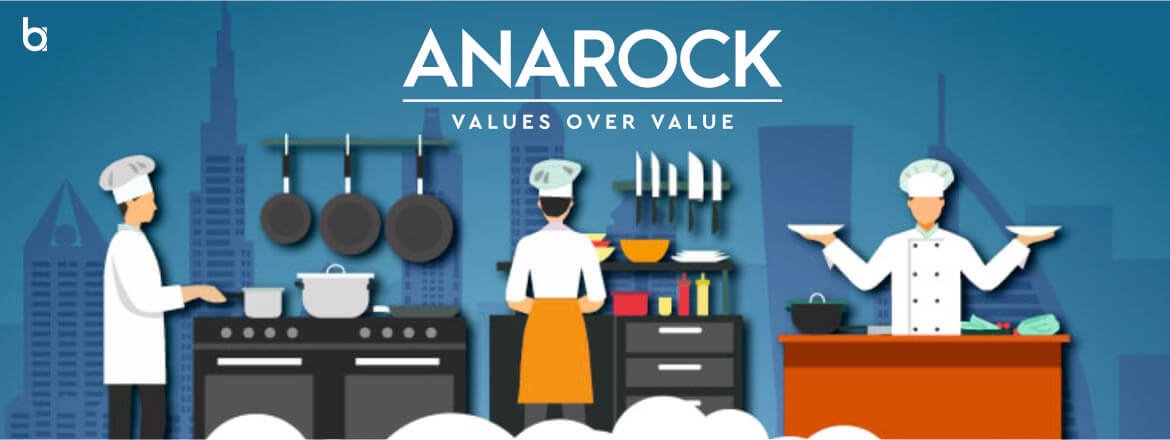Rentals in prime locations ‘eat-up’ av. 25-30% of a restaurant’s revenue, against the global trend of 15-20%
Online food delivery segment likely to cross $7 bn in 2019
Prominent brands operating multiple cloud kitchens include Faasos, Fresh Menu, Swiggy, etc.
High real estate costs have already kick-started concepts like coworking and coliving in the office and residential spaces. It was just a matter of time before the F&B sector came up with its own real estate cost-saving recipe.
Real estate rentals have risen significantly in major cities like MMR on the back of the increasing shortage of quality supply. This factor alone often leads to thousands of restaurants across Indian metros shutting shop each year. Rentals in some prime locations in Mumbai can ‘consume’ 25-30% of a restauranteur’s total monthly revenue.
This profit-devouring range is significant if we consider the average global trend of 15-20%. It holds true for many non-prime areas of cities like Mumbai as well.
However, prime locations are obviously the lodestone of success for F&B, especially when it comes to full-fledged restaurants. Even a small food counter drawing much lower rentals can do good business as long as the brand and its offering is right for the location and its clientele.
Because they can afford the high rentals, many organized domestic and global F&B brands survive while smaller, unorganized players often have to pull out. Besides cutting down on profit margins, high rental costs also limit F&B players’ business scalability, since renting the right space requires high working capital and upfront deposits.
Cloud Kitchens to the Rescue
Given these challenges, the new concept of ‘cloud kitchens’ – which involves low operating costs and high-profit margins – is gaining increasing traction among F&B players.
A cloud kitchen – usually situated in a remote (read cost-effective) area – is essentially space where food is prepared for delivery only and has no dine-in or takeaway facilities. In many cases, small eateries come together to share a kitchen facility where deliveries can be made easily.
Cloud kitchens reduce real estate costs as they do not require prime locations. Also, because of the fact that kitchen space is shared by many players and the production costs are much lower, the opportunity to scale up remains high.
Aggregators Bet on Cloud Kitchens
According to the Statista Online Food Delivery report for India, revenue in the online food delivery segment is likely to cross $7 bn in 2019. Food delivery majors such as Swiggy and Zomato are constantly looking to scale up, and cloud kitchens provide the ideal opportunity to do just that.
Leveraging their core strength in technology, delivery, and discount distribution, these food aggregators provide the requisite infrastructure and logistics to local F&B enterprises by way of cloud kitchens.
For example, Swiggy Access helps restaurants to set up kitchen spaces along with full infrastructure and logistics assistance, to serve food in the areas where they lack presence.
The trend of cloud kitchens does not benefit only food delivery aggregators. Restaurant owners and caterers are now also getting on this bandwagon, with cloud kitchen models varying from company to company.
Fresh Menu has a single-brand kitchen with an online ordering system in place. Spread over 1,200-2,000 sq. ft. area, there is a single/centralized kitchen where chefs from partner restaurants come together to use the facility
Faasos, which caters to brands like Behrouz, Oven Story, Kettle & Keg, has a centralized kitchen for these multiple brands sprawling over 1,500 – 5,000 sq. ft. area
Swiggy Access also has centralized plug-and-play kitchens for 5-6 brands owned by the aggregator, with nearly 100-500 sq. ft. area for each brand.
Significant Cost Advantages
Cloud kitchens offer a substantial cost advantage over traditional restaurants – they require much less space and only basic interiors, and can operate out of low-visibility areas. Given this model’s inherent benefits, many F&B brands have seen their revenues soar over the years, while losses and cash burns have dipped significantly.
For instance, Faasos forecast its net revenue to rise to INR 300 crore in FY 2019 (from INR 147 crore in FY2018) while its losses were almost halved in FY18. With nine in-house brands under its umbrella, Faasos currently operates out of nearly 175 cloud kitchens across 12 cities and targets to cross the 200 marks by 2020.
Cloud kitchens have proved to be a gamechanger for many such brands, saving them from the tyranny of high rentals in prime locations. The cost of setting up a restaurant in a major city starts at a minimum of Rs 10 lakh to hundreds of crores, depending on size and exact location and considering that a traditional restaurant must also offer adequate parking to be viable. 25-30% of this outlay goes towards rentals alone.
In comparison, a cloud kitchen can be set up with a basic cost of Rs 2 lakh and comparatively lower rentals.
Average Restaurant Rentals vs Cloud Kitchen Rentals
| Cities | Avg. Monthly Rentals in Restaurant (INR/sq. ft.) | Avg. Monthly Rentals in Restaurant (INR/sq. ft.) |
|---|---|---|
| Bengaluru | 50-125 | <75 |
| Pune | 45-120 | <70 |
| Gurgaon | 70-150 | <70 |
| Noida | 50-110 | <60 |
| Delhi | 60-200 | <80 |
| Mumbai | 100-250 | <120 |
Source: ANAROCK Research
The above rental comparison includes only those restaurants located in relatively cost-effective localities. If we consider fine-dining spaces across high streets of major metros, the rental difference is much wider.
Rentals have been rising inexorably over the last five years, and many restaurants find them very difficult – if not impossible – to accommodate them. For instance, the popular high street markets in MMR and NCR have exorbitant monthly rentals which have risen as high as 94% in a span of five years, even though the overall business generated there may not have seen a consummate increase.
| MMR | |||
|---|---|---|---|
| Micro Market | Avg. Rentals INR/ sq. ft. (Q1 2014) | Avg. Rentals INR / sq. ft. (Q1 2019) | % Change |
| Fun Republic- Andheri West | 155 | 300 | 94% |
| Saki Naka | 190 | 320 | 68% |
| Pali Hills | 250 | 350 | 40% |
| Bandra West | 300 | 400 | 33% |
| Kala Ghoda | 310 | 480 | 55% |
| BKC | 300 | 500 | 67% |
| Kamala Mills | 230 | 350 | 52% |
Source: ANAROCK Research
| Delhi-NCR | |||
|---|---|---|---|
| Micro Market | Avg. Rentals INR/ Sq. ft. (2014) | Avg. Rentals INR / Sqft (Q1 2019) | % Change |
| Sector 18- Noida | 170 | 265 | 56% |
| Kaushambi- Ghaziabad | 90 | 160 | 78% |
| South Ex- Delhi | 450 | 800 | 78% |
| MG Road- Gurgaon | 170 | 280 | 65% |
| Greater Kailash- Delhi | 290 | 450 | 55% |
| Khan Market- Delhi | 700 | 1300 | 86% |
| Hauz Khas- Delhi | 500 | 750 | 50% |
| Connaught Place | 600 | 1000 | 67% |
Source: ANAROCK Research
Unsurprisingly, F&B brands are betting big on the new cloud kitchen format, and are looking to use it to expand across cities. Realising its potential, other businesses such as cab aggregator Ola have entered this space. Ola currently has over 20 cloud kitchens across top cities. Similarly, hospitality major Oyo is also looking to venture into this space under an independent brand, with plans to open nearly 100 cloud kitchens over the next five years.
The Future of Cloud Kitchens – Piping Hot
Going by the growing number of cloud kitchens in cities such as Bengaluru, NCR, MMR and Pune, this trend is certainly more than a flash in the pan. In fact, some cloud kitchens have also leased distressed properties that could not find takers because of their location.
Quick service restaurant (QSR) brands such as KFC are opting for no-frills delivery kitchens known as ‘dark kitchens’ to cater to high-service areas. Even as restaurant rentals continue to stay high in major cities, restaurant owners are opting for the revenue-sharing or equity sharing model with developers or landlords, similar to other retail formats.
Statista Online Food Delivery’s India report pegs India, the country’s online food delivery industry is expected to grow at a CAGR of 9.9% with a projected market volume of $ 10.3 billion by 2023. Thus, despite the cons of less brand visibility and zero consumer interaction, cloud kitchens offer a profitable way to service this burgeoning demand by means of a shared economy where single kitchens house multiple restaurant brands – essentially functioning like coworking spaces.















